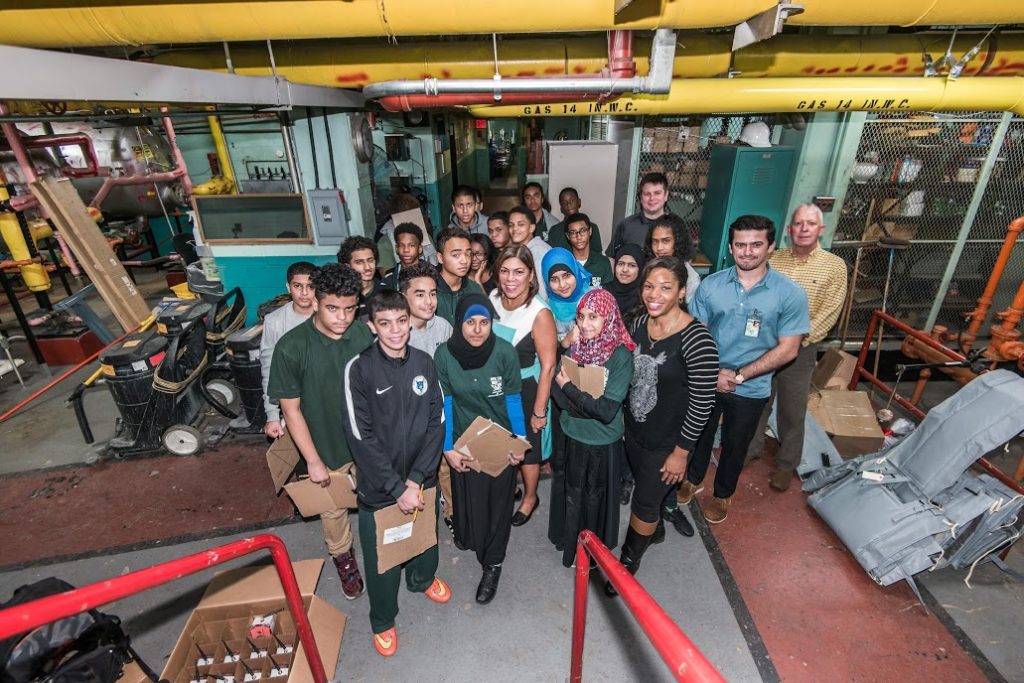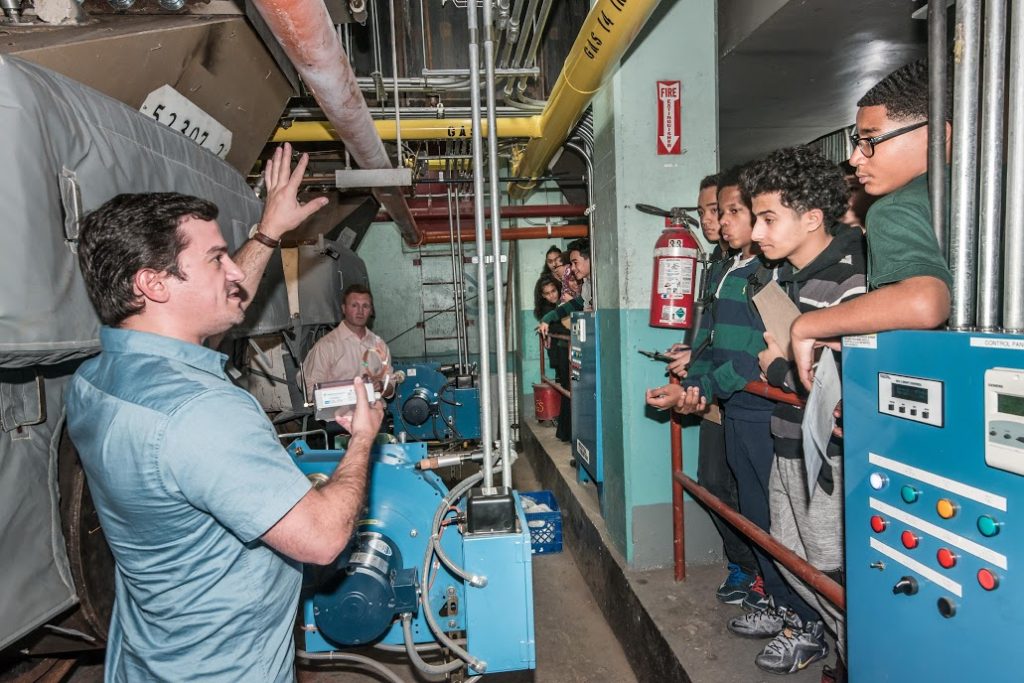By Fai Walker, MS 126 Greenpoint Eco-Schools Sustainability Coach

[MS 126 students and Principal Maria Ortega visit the school’s boiler room. Photo by DCAS]
This past November, at the outset of winter heating season, a class of MS 126 6th graders visited the school’s boiler room to observe the installation of new energy-saving technology that will reduce the schools’ greenhouse gas emissions while saving money: a thermal jacket for the boiler. MS 126 students have been studying how their behaviors and habits contribute to the production of greenhouse gases and, as part of the Greenpoint Eco-Schools program, have set an ambitious goal to reduce energy usage by 10% or more!
Eric Thorensen, MS 126 Custodial Engineer, explains that Thermax jacket is part of the City’s overall efforts to implement energy conservation and efficiency programs in existing school buildings. Recently Mr. Thorensen accepted, on behalf of MS 126, an award from Environmental Protection Agency for a 36% reduction in greenhouse gases.
The boiler’s new thermal jacket, installed by the Department of Citywide Administrative Service (DCAS) Innovative Demonstrations for Energy Adaptability (IDEA) program, will save the school 9,376 therms of natural gas, 50 Mg (metric tons) of CO2 during the course of the demonstration, resulting in a cost savings of $8,648.

[DCAS Engineer, Hamid Lakic, explains the technology of the Thermax boiler jacket. Photo by DCAS.]
Hamid Lekic, a DCAS Energy Project Engineer, notes that the city agency was excited to not only implement this energy savings project but was also excited to be able to engage students in a discussion about seldom seen parts of school facilities, “Buildings contribute to a substantial portion of greenhouse gas emissions and simply saying we’re reducing GHG’s isn’t as effective as getting hands on, showing the installation, explaining the physics behind how this contributes to a greener NYC and cleaner air for all.”
MS 126 student Kezian explains, “I had been in the boiler room at my old school so I already knew what to expect. I knew that the boiler has a very important job in schools,” “I expected to see bugs and rats. I was scared to go downstairs!” chimes in Lori. “When we got to the basement there were three men who were Thermax installers. Some had engineering degrees. I never knew that such a job existed.”
The installers explained that the jackets are custom made from fiberglass, increase boiler efficiency, and, because boiler doors without jackets can get as hot as 350 degrees, ensure the safety of MS 126 custodians who have to inspect the boiler on a regular basis.
Like humans, boilers wear jackets to trap the heat inside. Samantha admits that she thought the jacket would look like a jacket that someone wears. Kezian gives her a ‘you’ve got to be kidding’ look. Everyone at the table laughs. Teacher Amber Howes reflects on the experience, “I know how powerful hands-on learning is. I could talk until I am blue in the face, but for middle schoolers, it’s about experiencing it. Seeing it.”
“ So, what did you learn?,” Ms. Howes asks her students.
“That without the thermal jackets the boiler would work twice as hard, which would be wasting energy and money,” Alexis Delgado offers.
“…and causing more pollution,” says Samantha.
“…and the thermal jacket material is safe for the environment,” adds Lori.
Boilers should always wear jackets in the winter. Thanks to this new energy-saving technology, MS 126 is well on their way to meeting their energy reduction goal!

Photo by DCAS.



